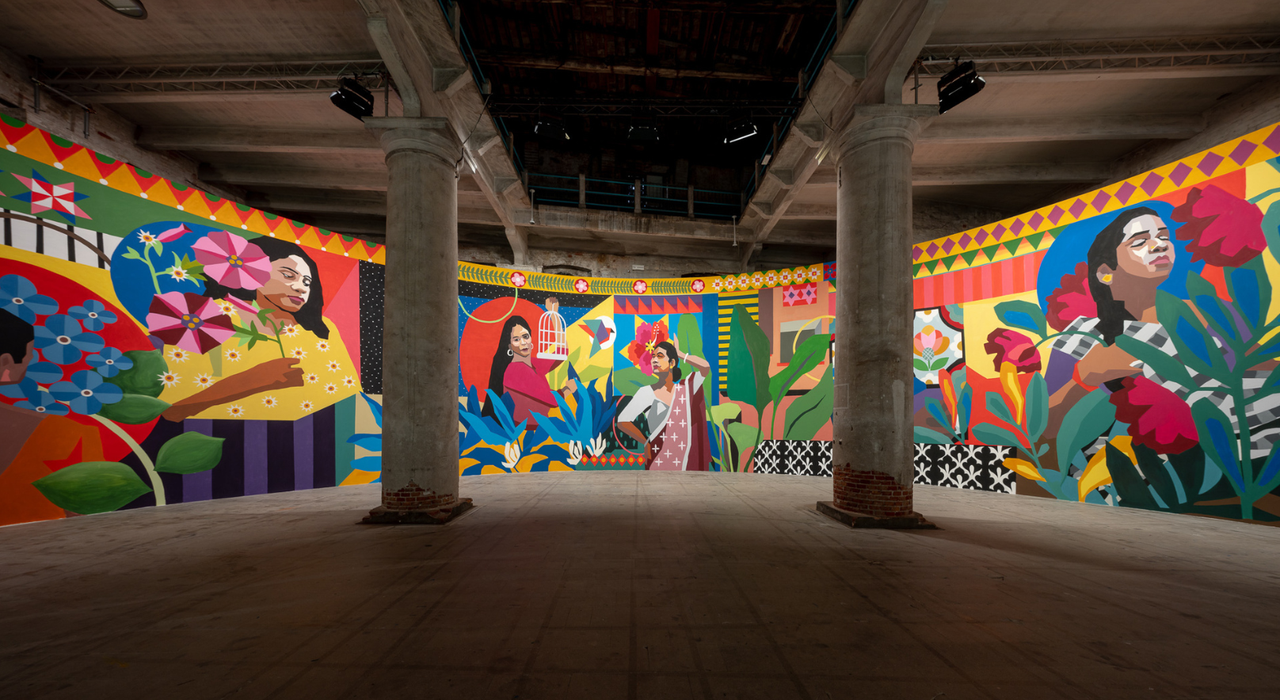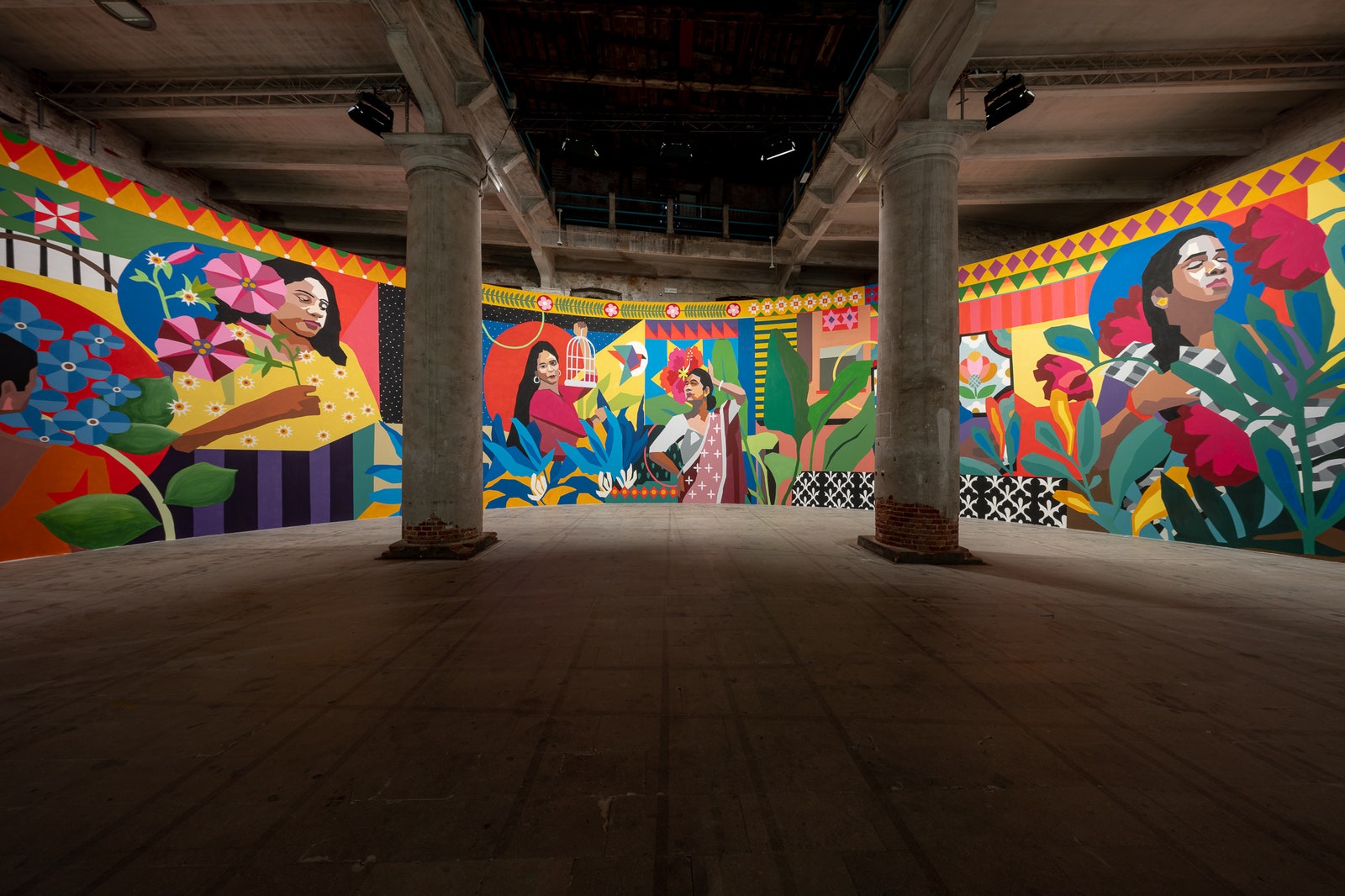India may not be presenting a national pavilion at the Venice Biennale this year, however, as you walk through the Venetian calle, or enter the main exhibition, a rich Indian art presence is at once evident. The 60th Venice Biennale, curated by Adriano Pedrosa and titled Foreigners Everywhere, includes 12 Indian artists, a record high and quadruple the number from the previous edition.
The Indian presence starts at Nucleo contemporaneo, inside the Arsenale, a section that focuses on the production of queer artists persecuted or outlawed, self-taught or folk artists, and indigenous artists. On display here is Bhupen Khakhar’s “Fishermen in Goa”, as well as a massive mural work by art collective Aravani Art Project, which aims to create a collaborative space for the transgender community through public art. India is also a part of Marco Scotini’s project “Disobedience Archive,” a video archive installation including the award-winning documentary “Bombay our city” (1985) by Anand Patwardhan, which tells the story of the daily battle for survival of the city’s million slum dwellers at the time.
The Indian presence is strongest at the Central Pavilion at Giardini, particularly in the Nucleo Storico, which collects works from twentieth-century Latin America, Africa, the Middle East, and Asia. Seen here are Monika Correa‘s (first time at the Biennale) textile artwork, “No Moon Tonight”, whose almost hidden three-dimensionality complements, next to it, the feminine abstract sculpture “Lunar” by Zilia Sánchez, as well as the curves and crevices that, when viewed from the side, resemble lips or breasts.
The juxtapositions of stories and latitudes are not daring, but revealing: Shimla-born poet and painter, Anwar Jalal Shemza’s vibrant colours and rhythmic are combined with Ernest Mancoba’s diamond patterns resembling Congo helmet masks, as well as angular geometric shapes and saturated colours that define jazz expert and artist Kazuya Sakai, born in Argentina. Similarly, “Offrande”, an emblem of Sayed Haider Raza’s oeuvre with a distinct earthy colour palette of ochres, greens, burnt umbers, deep reds, and dense black, stays next to a Carmen Herrera’s paint, whose minimalist geometries broke new ground in the history of global abstraction.


